Lattice Boltzmann and Phase-Field models by Alain CARTALADE
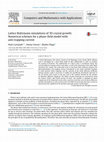
Computers & Mathematics with Applications, 2016
A lattice-Boltzmann (LB) scheme, based on the Bhatnagar-Gross-Krook (BGK) collision rules is deve... more A lattice-Boltzmann (LB) scheme, based on the Bhatnagar-Gross-Krook (BGK) collision rules is developed for a phase-field model of alloy solidification in order to simulate the growth of dendrites. The solidification of a binary alloy is considered, taking into account diffusive transport of heat and solute, as well as the anisotropy of the solid-liquid interfacial free energy. The anisotropic terms in the phase-field evolution equation, the phenomenological anti-trapping current (introduced in the solute evolution equation to avoid spurious solute trapping), and the variation of the solute diffusion coefficient between phases, make it necessary to modify the equilibrium distribution functions of the LB scheme with respect to the one used in the standard method for the solution of advection-diffusion equations. The effects of grid anisotropy are removed by using the lattices D3Q15 and D3Q19 instead of D3Q7. The method is validated by direct comparison of the simulation results with a numerical code that uses the finite-difference method. Simulations are also carried out for two different anisotropy functions in order to demonstrate the capability of the method to generate various crystal shapes.
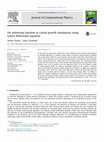
Journal of Computational Physics, 2016
In this paper, we present the ability of the Lattice Boltzmann (LB) equation, usually applied to ... more In this paper, we present the ability of the Lattice Boltzmann (LB) equation, usually applied to simulate fluid flows, to simulate various shapes of crystals. Crystal growth is modeled with a phase-field model for a pure substance, numerically solved with a LB method in 2D and 3D. This study focuses on the anisotropy function that is responsible for the anisotropic surface tension between the solid phase and the liquid phase. The anisotropy function involves the unit normal vectors of the interface, defined by gradients of phase-field. Those gradients have to be consistent with the underlying lattice of the LB method in order to avoid unwanted effects of numerical anisotropy. Isotropy of the solution is obtained when the directional derivatives method, specific for each lattice, is applied for computing the gradient terms. With the central finite differences method, the phase-field does not match with its rotation and the solution is not any more isotropic. Next, the method is applied to simulate simultaneous growth of several crystals, each of them being defined by its own anisotropy function. Finally, various shapes of 3D crystals are simulated with standard and nonstandard anisotropy functions which favor growth in 100-, 110-and 111-directions.
Proceeding of IHTC15, 2014
Phase field models are powerful tools to simulate the interfaces evolution in glass melt solidifi... more Phase field models are powerful tools to simulate the interfaces evolution in glass melt solidification mechanism, including crystallization phenomena. The purpose of this work is the numerical implementation of a phase field model for solidification of a dilute binary mixture by using the Lattice Boltzmann equations. The proposed Boltzmann method is based on the BGK approximation for kinetic equations relative to the phase field, supersaturation and temperature. In order to simulate the anisotropic term in the phase field equation, the equilibrium distribution function is a modification of the one used in the standard method for the advection-diffusion equation. Simulations are carried out for anisotropic crystal growth for various thermal conditions, i.e., for several values of undercooling and different values of Lewis number.
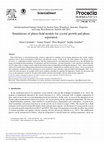
Procedia Materials Science, 2014
Phase-field theory is a thermodynamically consistent approach for modeling and simulating phenome... more Phase-field theory is a thermodynamically consistent approach for modeling and simulating phenomena that exhibit complex structures such as those encountered in fluid flows and materials science. In this work, the main features of the theory will be reviewed, i.e. mathematical models which arise from the minimization of a thermodynamic potential such as the Helmholtz free energy describing the phenomenology of bulk phases and their interactions. An order parameter is also introduced which plays the role of a phase index avoiding to track explicitly the interface between liquid/liquid and liquid/solid phases. Next, various examples
will be given on the basis of phenomena observed in nuclear glasses. Simulations are divided into two classes: for a non-conserved order parameter, simulations will be presented on crystal growth of a pure substance with and without hydrodynamic effect. For a conserved order parameter, an example will be given on phase separation by spinodal decomposition. Finally, the discussion will focus on the parameters needed for the phase-field models and their relationships with the sharp interface approach.
Anomalous transport modelled with fractional ADE by Alain CARTALADE
Tracer tests in natural porous media sometimes show abnormalities that suggest considering a frac... more Tracer tests in natural porous media sometimes show abnormalities that suggest considering a fractional variant of the advection–diffusion equation supplemented by a time derivative of non-integer order. We are describing an inverse method for this equation: It finds the order of the fractional derivative and the coefficients that achieve minimum discrepancy between solution and tracer data. Using an adjoint equation divides the computational effort by an amount proportional to the number of freedom degrees, which becomes large when some coefficients depend on space. Method accuracy is checked on synthetical data, and applicability to actual tracer test is demonstrated.
Computers & Mathematics with Applications, 2013
Fractional partial differential equations provide models for sub-diffusion, among which the fract... more Fractional partial differential equations provide models for sub-diffusion, among which the fractal Mobile-Immobile Model (fMIM) is often used to represent solute transport in complex media. The fMIM involves four parameters, among which we have the order of an integro-differential operator that accounts for the possibility for solutes to be sequestered during very long times. To guess fMIM parameters from experiments, an accurate method consists in optimizing an objective function that measures how much model solutions deviate from data. We show that solving an adjoint problem helps accurate computing of the gradient of such an objective function, with respect to the parameters. We illustrate the method by applying it on experimental data issued from tracing tests in porous media.
Mécanique & Industries, 2009
De nombreuses courbes de percée, obtenues en particulier en milieu poreux insaturé avec des trace... more De nombreuses courbes de percée, obtenues en particulier en milieu poreux insaturé avec des traceurs passifs, décroissent comme des puissances du temps. Ce comportement est incompatible avec les lois de Fourier et Fick, par contre il correspond aux solutions d'une vaste classe d'équations aux dérivées partielles, incluant des opérateurs non-locaux en temps. De plus, ceséquations représentent la limite macroscopique d'un grand nombre de modèlesà petiteéchelle. Ce résultat, qui aété démontréà l'aide d'une méthode probabiliste dans le cas de paramètres uniformes et constants, est illustré par des simulations numériques dépassant ce cadre.
Physical Review E, 2009
We propose a nonlinear random walk model to describe the dynamics of dense contaminant plumes in ... more We propose a nonlinear random walk model to describe the dynamics of dense contaminant plumes in porous media. A coupling between concentration and velocity fields is found, so that transport displays non-Fickian features. The qualitative behavior of the pollutant spatial profiles and moments is explored with the help of Monte Carlo simulation, within a Continuous Time Random Walk approach. Model outcomes are then compared with experimental measurements of variable-density contaminant transport in homogeneous and saturated vertical columns.
Dans les milieux poreux non saturés, on observe des courbes de percée décroissant comme des puis-... more Dans les milieux poreux non saturés, on observe des courbes de percée décroissant comme des puis- sances du temps. Ceci est incompatible avec les lois de Fourier et Fick, mais correspond aux solutions du modèle MIM fractal, qui inclut des opérateurs intégro-différentiels d’ordre fractionnaire. Face à des courbes de percée expérimentales, la méthode de l’état adjoint permet de déterminer les paramètres d’une équation d’advection-dispersion. Cette méthode s’adapte au modèle MIM fractal, qui fait inter- venir un opérateur fractionnaire, dont l’ordre doit être déterminé.
Transport in porous media by Alain CARTALADE
Geochimica et Cosmochimica Acta, 2006
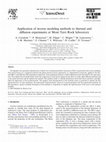
Physics and Chemistry of the Earth, Parts A/B/C, 2007
The Opalinus clay parameter identification at Mont Terri Underground Rock Laboratory (URL) is per... more The Opalinus clay parameter identification at Mont Terri Underground Rock Laboratory (URL) is performed with inverse modeling. This article focuses on a comparison between the global and local inverse approaches, in a deterministic framework, applied to the thermal (HE-C) and diffusion (DI) experiments respectively. Each experiment presents a similar diffusion process described by the same equation. This simple forward model makes easier the comparison of each inverse approach and allows to easily apply different methods such as the neural networks and the adjoint state method. The synthesis yields to valuable information about their merits and flaws, and highlights the importance of the parametrization. The singular value decomposition of the Jacobian matrix is presented to identify the best parametrization. In each experiment, the numerically found parameter values are in good agreement with the experimental methods. In DI experiment a spatial variability description of the medium is a hypothesis to explain the rapid decrease of the tracer in the injection chamber.
Journal of Contaminant Hydrology, 2009
We investigate the spatial and temporal features of dense contaminant plumes dynamics in porous m... more We investigate the spatial and temporal features of dense contaminant plumes dynamics in porous materials. Our analysis is supported by novel experimental results concerning pollutant concentration profiles inside a vertical column setup. We describe the experimental methods and elucidate the salient outcomes of the measurements, with focus on miscible fluids in homogeneous saturated media. By resorting to a finite elements approach, we numerically solve the equations that rule the pollutants migration and compare the simulation results with the experimental data. Finally, we qualitatively explore the interfacial dynamics behavior between the dense contaminant plume and the lighter resident fluid that saturates the column.
Papers by Alain CARTALADE
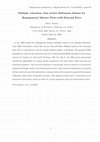
Physical Review E, 2008
A new LBM scheme for homogeneous mixture modeling, based on the multiple-relaxationtime (MRT) for... more A new LBM scheme for homogeneous mixture modeling, based on the multiple-relaxationtime (MRT) formulation, which fully recovers Maxwell-Stefan diffusion model in the continuum limit with (a) external force and (b) tunable Schmidt number, is developed. The proposed MRT formulation is based on the theoretical basis of a recently proposed BGK-type kinetic model for gas mixtures [P. Andries, K. Aoki and B. Perthame, JSP, Vol. 106, N. 5/6, 2002] and it substantially extends the applicability of a scheme already proposed by the same author, which used only one relaxation parameter. The recovered equations at macroscopic level are derived by an innovative expansion technique, based on the Grad moment system. Some numerical simulations are reported for the solvent test case with external force, aiming to find out the numerical ranges for the transport coefficients which ensure acceptable accuracies. The numerical results prove a contraction of the theoretical expectations, which are based on a strong separation among the characteristic scales.


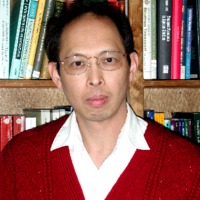

Uploads
Lattice Boltzmann and Phase-Field models by Alain CARTALADE
will be given on the basis of phenomena observed in nuclear glasses. Simulations are divided into two classes: for a non-conserved order parameter, simulations will be presented on crystal growth of a pure substance with and without hydrodynamic effect. For a conserved order parameter, an example will be given on phase separation by spinodal decomposition. Finally, the discussion will focus on the parameters needed for the phase-field models and their relationships with the sharp interface approach.
Anomalous transport modelled with fractional ADE by Alain CARTALADE
Transport in porous media by Alain CARTALADE
Papers by Alain CARTALADE
will be given on the basis of phenomena observed in nuclear glasses. Simulations are divided into two classes: for a non-conserved order parameter, simulations will be presented on crystal growth of a pure substance with and without hydrodynamic effect. For a conserved order parameter, an example will be given on phase separation by spinodal decomposition. Finally, the discussion will focus on the parameters needed for the phase-field models and their relationships with the sharp interface approach.